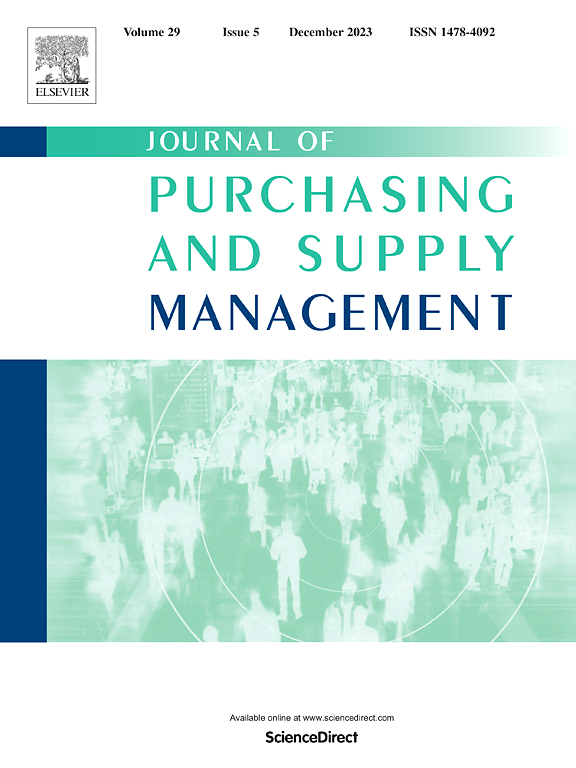熟能生巧:利用总拥有成本来教授全球选址决策
IF 8.7
2区 管理学
Q1 MANAGEMENT
引用次数: 0
摘要
本文介绍了一种三阶段的总拥有成本(TCO)体验式学习方法。利用从199名学生中收集的8个不同学期的数据,我们提出了基于国际生产折衷理论和行为决策(系统1和系统2思维)的假设,为教育工作者和管理者提供建议。在练习的第一部分中,使用系统1思维,我们要求学生选择远岸(例如,中国)或近岸(例如,墨西哥)作为制造地点,并提供支持他们决定的理由。我们发现,选择远岸的学生使用资源和效率寻求标准,而选择近岸的学生使用战略和市场标准。此外,我们发现学生倾向于可能的可得性偏见。我们确定了影响决策过程的人口因素,并强调了学生未利用的重要变量,使我们能够建议改变大学课程。在练习的第二部分和第三部分,我们要求学生使用总拥有成本(系统2思维)重新分析他们的决策,然后反思他们在TCO决策之前和之后的决策。有趣的是,尽管出乎意料,但看到相当多的学生愿意改变他们的观点或提供引用或学术支持作为反思的一部分,这是令人鼓舞的。这种包括反思和记录在内的体验式学习干预是建立能够适应动态、复杂和全球环境的当前和未来供应链管理人员的重要练习。我们的研究通过展示偏见在全球采购决策中的作用以及减轻它的方法来增加文献。本文章由计算机程序翻译,如有差异,请以英文原文为准。
Practice makes perfect: Using the total cost of ownership to teach global locational decision making
In this paper we introduce a three-stage Total Cost of Ownership (TCO) experiential learning exercise. Using data collected from 199 students across eight different semesters, we offer hypotheses grounded in the eclectic theory of international production and in behavioral decision making (System 1 and System 2 thinking) to make recommendations for educators and managers. In part one of the exercise, using System 1 thinking, we asked students to select far-shoring (e.g., China) or near-shoring (e.g., Mexico) as a manufacturing location and provide rationale to support their decision. We found that students selecting far-shoring used resource- and efficiency-seeking criteria while students selecting near-shoring used strategic- and market-based criteria. In addition, we found that students were prone to possible availability bias. We identified demographic factors impacting the decision-making process, and highlighted important variables not utilized by students enabling us to recommend changes in college curriculums. In the second and third parts of the exercise, we asked students to reanalyze their decisions using Total Cost of Ownership (System 2 thinking) and then reflect on their pre and post TCO decisions. Interestingly, though unexpectedly, it was encouraging to see a considerable number of students either willing to change their perspective or provide citations or scholarly support as part of the reflection. Such an experiential learning intervention including reflection and documentation is an important exercise to build current and future supply chain managers who can adapt to a dynamic, complex, and global environment. Our study adds to the literature by demonstrating the role of bias in global sourcing decision making and ways to mitigate for it.
求助全文
通过发布文献求助,成功后即可免费获取论文全文。
去求助
来源期刊

Journal of Purchasing and Supply Management
MANAGEMENT-
CiteScore
10.30
自引率
18.00%
发文量
31
审稿时长
70 days
期刊介绍:
The mission of the Journal of Purchasing & Supply Management is to publish original, high-quality research within the field of purchasing and supply management (PSM). Articles should have a significant impact on PSM theory and practice. The Journal ensures that high quality research is collected and disseminated widely to both academics and practitioners, and provides a forum for debate. It covers all subjects relating to the purchase and supply of goods and services in industry, commerce, local, national, and regional government, health and transportation.
 求助内容:
求助内容: 应助结果提醒方式:
应助结果提醒方式:


